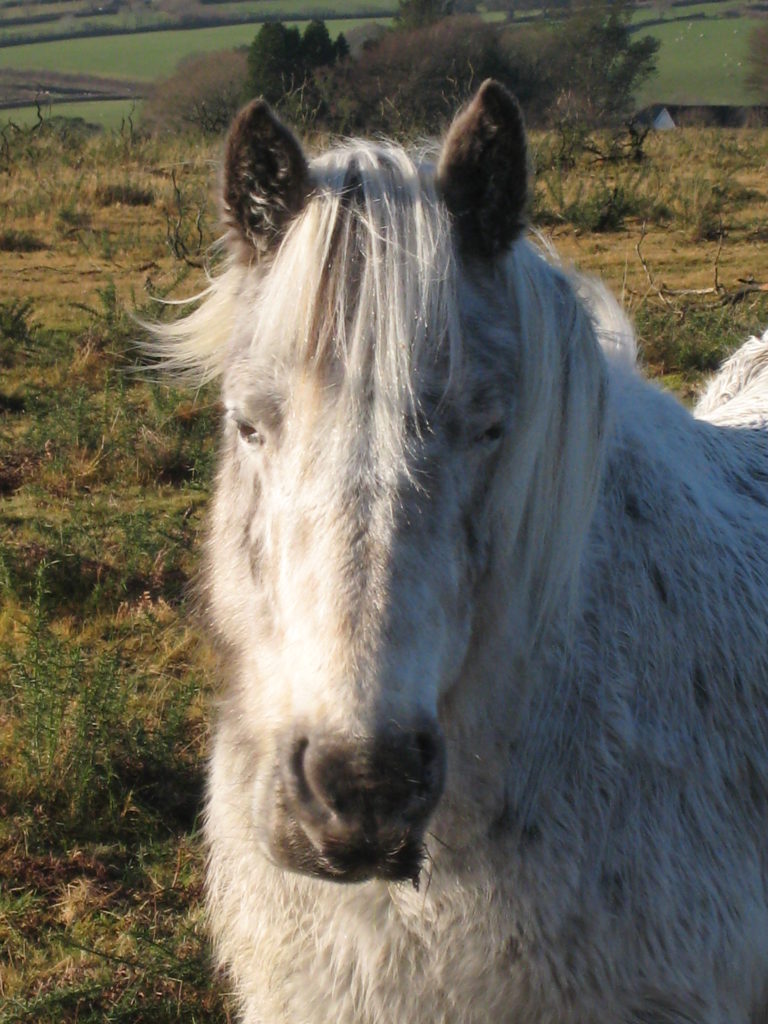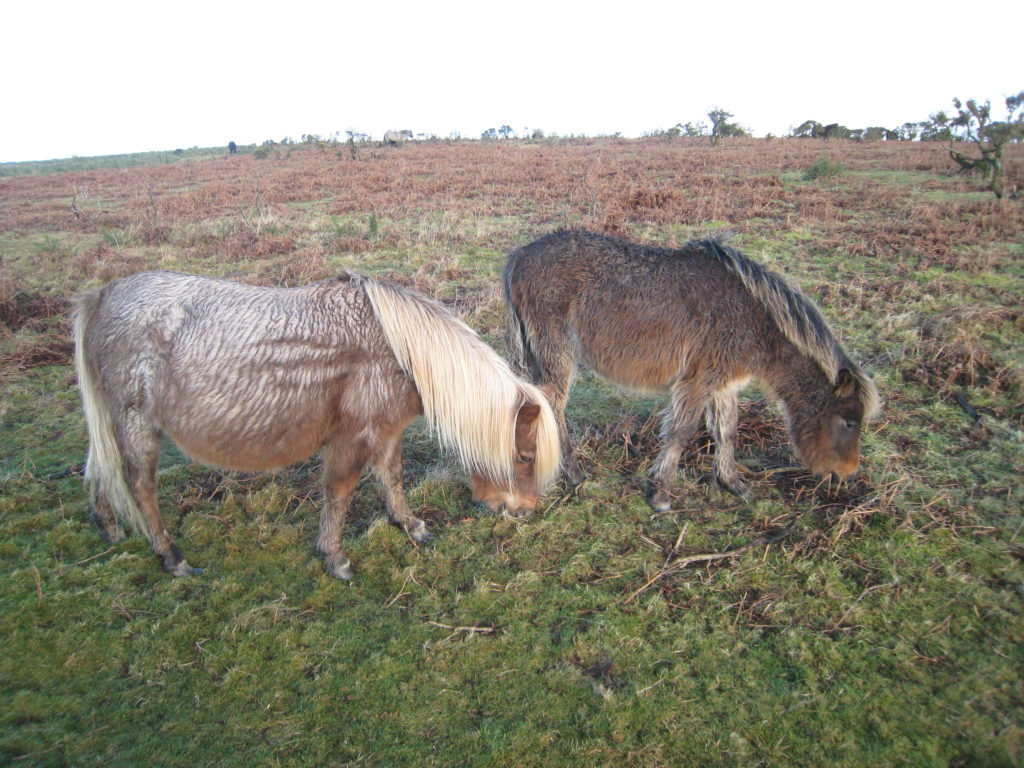In my last blog post I discussed management techniques for keeping your horse warm as well as ways horses keep themselves warm. Today I will share how you can use nutrition to support your horse during the winter cold.
 The critical temperature mentioned in part I can be used to determine what your horses nutritional requirements are relative to ambient temperature, wind chill and wet hair coat. According to an article by the University of Maine Cooperative Extension, “estimates for the lower critical temperature (LCT) for horses are between 30 and 50 degrees Fahrenheit depending on hair coat, body condition, wetness and windchill”. They go on to give the lower critical temperatures in degrees Fahrenheit based on hair coat as follows, wet or short hair 60, moderate length hair coat 50, heavy coat 30. Once the average temperature reaches the LCT human intervention is required such as shelter, a blanket and or extra feed.
The critical temperature mentioned in part I can be used to determine what your horses nutritional requirements are relative to ambient temperature, wind chill and wet hair coat. According to an article by the University of Maine Cooperative Extension, “estimates for the lower critical temperature (LCT) for horses are between 30 and 50 degrees Fahrenheit depending on hair coat, body condition, wetness and windchill”. They go on to give the lower critical temperatures in degrees Fahrenheit based on hair coat as follows, wet or short hair 60, moderate length hair coat 50, heavy coat 30. Once the average temperature reaches the LCT human intervention is required such as shelter, a blanket and or extra feed.
In our blog post “10 things to do now to prepare for winter” I suggested making a plan on how you will keep track of the weather over the winter in order to make good management decisions. This is because you not only need to know if there is going to be a significant drop in ambient temperature but also what the temperature will be with wind chill, as movement of air across skin causes increased heat loss. Sometimes you will see on weather forecasts a temperature and then a “feels like” temperature. This is the temperature accounting for wind chill. The National Weather Service has a wind chill chart that shows for any given ambient temperature and wind speed combination what the wind chill temperature will be. For example when ambient temperature is 35 degrees Fahrenheit and wind speed is 10mph wind chill temperature is 27 degrees Fahrenheit, and when ambient temperature is 35 degrees Fahrenheit and wind speed is 25mph wind chill temperature is 23 degrees Fahrenheit. Water freezes at 32 degrees Fahrenheit so without accounting for wind chill these examples are above freezing, but with wind chill both drop the temperature below freezing.
 So how do you adapt your feeding regime to insure that your horse has enough energy when the temperature drops? It is estimated that for every 5 degree drop in temperature below the horses LCT an additional 1 Mcal/day are necessary which roughly equates to an additional 1 lbs of grass hay. It is not only safest to make relatively quick changes in diet through alterations in hay in order to avoid colic and laminitis, but when we want to raise internal heat production, increased hay consumption is best.
So how do you adapt your feeding regime to insure that your horse has enough energy when the temperature drops? It is estimated that for every 5 degree drop in temperature below the horses LCT an additional 1 Mcal/day are necessary which roughly equates to an additional 1 lbs of grass hay. It is not only safest to make relatively quick changes in diet through alterations in hay in order to avoid colic and laminitis, but when we want to raise internal heat production, increased hay consumption is best.
Hay is digested by bacteria/microbes in the horse’s cecum and large intestine and this microbial fermentation actually produces heat which warms the horse from the inside. If we think back to the 1100 lb example horse from our previous post, he needed 16.7 Mcal/day for maintenance and if we say that he has a medium hair coat and therefore a LCT of 50 degrees Fahrenheit, then when the temperature drops to 40 degrees Fahrenheit, he will need 18.7 Mcal/day. Assuming 1 Mcal/lb of grass hay this is a change from 16.7 lbs to 18.7lbs. Most horses will happily eat 2-2.5% of their body weight per day in dry matter if fed free choice, which for this horse would be 22-27.5 lbs per day of hay. So a horse at maintenance should easily be able to consume all the energy needed to stay warm and maintain body condition from hay alone. However, if a horse is working and needs energy not only for maintenance and warmth but also work, then the energy requirement will be greater and it may not be possible to meet this need from hay alone although as much of the need as possible should be met from hay for the reasons previously mentioned.
If you follow the weather forecast and know a storm is coming and what the expected temperature will be it is relatively straightforward to make the necessary changes in hay intake necessary. Ideally these changes should be made in the 24 hours leading up to the expected lower temperature and maintained throughout the cold spell.
Horses do adapt to cold over time, according to Dr Cymbaluk of the ministry of Agriculture, Food and Rural Affairs in Ontario Canada, horses typically require a 10-21 day adaptation period. A horse’s ability to adapt depends on the duration of the cold weather and the horse’s energy intake. A horse isn’t going to be able to adapt to a sudden winter storm and will require more intervention. However, energy intake is more critical. Well-fed horses adapt better than those who are underfed. Adaptation should be considered when contemplating a horse’s lower critical temperature. A horse who has spent a good amount of time in Arizona where the average summer high is around 95 degrees Fahrenheit and average winter low is around 55 degrees Fahrenheit may hit its lower critical temperature at a relatively higher temperature than a horse who lives in Maine where the average summer high is only around 70 degrees Fahrenheit but the average winter low is around 20 degrees Fahrenheit. For the horse from Arizona the lower critical temperature may be 60 degrees even with thick haircoat.
The age of the horse is also worth considering. Older horses are generally less efficient at both digestion and thermoregulation and so are more susceptible to extremes in temperature. They will therefore need a diet that is more easily digestible and may require intervention earlier than their younger counterparts to stay warm. Young horses especially those under a year of age are also less able to handle cold weather in part due to the large amounts of energy that are being utilized for growth. They should be provided with good shelter and ample access to good quality hay.
Your horse will tell you if he/she is cold, pay attention to the warning signs and make adjustments to hay intake and overall management as necessary to insure that your horse comes out of the winter in good condition.

How Do Horses Thermoregulate When It Is Cold? Part II by Dr. Clair Thunes and Summit Equine Nutrition LLC is licensed under a Creative Commons Attribution-NonCommercial-NoDerivs 3.0 Unported License.